Is QWERTY a good keyboard layout? (with tests) + everything you need to know
We very often say that it is a QWERTY keyboard. But what does it really mean? Is QWERTY just a type of keyboard? What actually is what we call QWERTY?
What is QWERTY?
It is not a type of keyboard. QWERTY is one of the many keyboard layouts that you can use. Although it is definitely the most common one.
It is so popular that most of the keyboards are created with a QWERTY layout on them. This layout is the default keyboard layout of Windows (and also most operating systems).
So what is QWERTY and how should we understand it?
QWERTY is a keyboard layout – an order and placement of the keys on your keyboard. It is not a type of keyboard. You can easily change your layout to another one. Although QWERTY is the most popular layout – more than 70% of the population uses QWERTY.
It is very hard to find a keyboard that’s created specifically for other layouts and for the English language. It is the default option when you type on anything. QWERTY is almost everywhere.
You can probably look at your keyboard and see this layout with no problem. But here it is for you. This is what QWERTY looks like:

QWERTY is a really old layout. It came from the typewriting machines. But overall it’s a decent layout. You can definitely type on it.
Why is the QWERTY keyboard called so?
We can often see a keyboard that’s called a QWERTY keyboard? Why is that so?
QWERTY layout is called so because of the first six keys of the upper row. But the keyboard is not exactly QWERTY.
Keyboards are called QWERTY just because they have this layout as their default. It doesn’t mean that you can only use QWERTY on a QWERTY keyboard. You don’t need a different keyboard for another layout.
QWERTY keyboard is called so because it has a QWERTY layout printed on its keys. It’s not a different type of keyboard from for example Dvorak. Because it’s QWERTY it has keys in the order of that layout. QWERTY layout is called so because of the first six letters of the upper row, which are „Q”, „W”, „E”, „R”, „T”, and „Y”.
Here’s a photo that will help you understand why this layout is called QWERTY:

A keyboard is just a tool that lets you type on your computer. You can use this tool to type using whatever keyboard layout you want to use.
Who invented the QWERTY keyboard?
Where did this layout come from? This is a brief history of creating a QWERTY layout:
The history of the QWERTY layout begins in 1867. In that year Christopher Latham Sholes, who was a newspaper editor and printer, came up with the first keyboard layout. It was shaped like a piano and looked like this:
- 3 5 7 9 N O P Q R S T U V W X Y Z 2 4 6 8 . A B C D E F G H I J K L M
Sholes didn’t stop on that look. He started with the piano look but he worked on improving his invention for the next five years.
In the first year, he moved things a little bit around and created four rows of letters. This is the state of Sholes’ invention in April 1870:
2 3 4 5 6 7 8 9 - A E I . ? Y U O , B C D F G H J K L M Z X W V T S R Q P N
This was the first change that he made but that wasn’t enough. After a few more years of trial, he created another form and sold it to Remington’s mechanics in 1873. This is what it looked like:
2 3 4 5 6 7 8 9 - , Q W E . T Y I U O P Z S D F G H J K L M A X & C V B N ? ; R
After Remington’s mechanics bought this layout they also left a mark on it. They made a few adjustments and added a few keys to the mix. And that’s how this layout became the QWERTY layout that we know today.
This is the final look of the layout. It’s been like that since the 1870s. As you can see the layout itself has over 150 years.
I’ve put this history in a quick summary for you. Here’s the answer to the question „Who invented the QWERTY keyboard layout?” and a history of this layout:
At first, it was Christopher Latham Sholes who came up with the first keyboard layout in 1867. He created a layout with keys in a piano order. Then in five years, he made a lot of changes to his invention (as the pictures show). In 1873 Sholes sold his invention to Remindton’s mechanics. After a few adjustments, it became how it is today.
This is the history of QWERTY layout. It is a very old layout. At first, it was used in typewriting machines. When computers became widely used then this layout transferred to keyboards in the form we know today.
What is the most popular layout?
There’s not much debate on this topic. You can probably tell that QWERTY is the most popular. It’s practically everywhere. Almost every single keyboard is created in QWERTY.
I think you can tell by yourself. What is the layout that you see most often? Or maybe I should ask something like that: Did you ever see a layout that’s different than QWERTY?
It is very hard to find a keyboard that doesn’t use either QWERTY or any of its language modifications like QWERTZ. It shows how much we use QWERTY. It is ridiculous how many people use this one layout.
The most popular layout is QWERTY. More than 70% of the population uses this layout. It comes as a default in most operating systems. It is also most often the layout that keyboards use. Probably your keyboard is also a QWERTY keyboard. The exception might be the language changes. Some languages require to use of different layouts.
When it comes to English speaking population it is mostly QWERTY. Even with people who don’t speak English QWERTY is still the most popular layout. Only some languages require something different.
Why is QWERTY in that order?
QWERTY is an old layout that was created in the 1870s. It was the first ever layout that was used for typewriting machines.
The look of this layout is due to the engineering of Christopher Latham Sholes. It is because of him that QWERTY ever became a thing.

There is no real reason for that order. It was due to creating and changing the layout for better usage. You could say it like that:
QWERTY is in that order because of the inventing process. This layout was created for typewriting machines and changed around to make typing on them better. QWERTY spaces the most typed letters far away from each other. This was to prevent the jamming of typewriting machines.
QWERTY looks like it looks due to trial and error. It is in that order because Sholes (who is the inventor) created it like that as a first-ever keyboard layout.
Why is QWERTY not ABCD?
Why this whole layout has to be QWERTY? Now we need to find the keys to type which are in this weird order. Why can’t it be just in alphabetical order?
We look at this layout from today’s perspective. For computers nowadays order of keys doesn’t matter. The keyboard will work in whatever layout you want it to work.
It wasn’t the case a few years ago. Before computers and keyboards, people used typewriting machines. This is what those machines looked like:

Typewriting machines had one common problem. If you pressed two keys that are next to each other, they could easily jam.
QWERTY is not in alphabetical order because it was designed for old typewriting machines. Those machines could easily jam. It happened if you pressed two keys that are next to each other. To prevent this from happening QWERTY spaces the most common letters far from each other.
The order of the keys in the QWERTY layout is created for typewriting machines. If you had keys in alphabetical order those machines would jam very often.
Why is QWERTY as bad as it is?
For today’s standards QWERTY can seem like a bad layout. But you need to remember that it wasn’t built for nowadays’ computers.
QWERTY was built for typewriting machines. This layout was meant to prevent those machines from jamming. It did it pretty well.
But time to answer the question. Why is QWERTY so bad?
QWERTY is not a bad layout. It was created to prevent old typewriting machines from jamming. QWERTY accomplished its purpose well. It can seem for today’s computers that QWERTY is a bad layout. It performs badly on our new machines because we no longer need to prevent keys from jamming.
QWERTY is not a bad layout. It is just that its purpose is no longer something we need.
The newer technical advantages enable us to have much more efficient layouts. There is no reason to use QWERTY. You can change your layout very easily.
If you want to know more about new and improved layouts, I recommend you to check out my article. It’s all about the Dvorak layout which is much more efficient than QWERTY. Here’s the article for you – ARTICLE ABOUT DVORAK
Is QWERTY outdated?
QWERTY was created in the 1870s. It is for sure an old layout. But it doesn’t mean that it’s outdated.
To actually check it I ran a few tests. I took the 100 most popular words in English and created a map for QWERTY. This map tells how often we need to hit each key when typing.
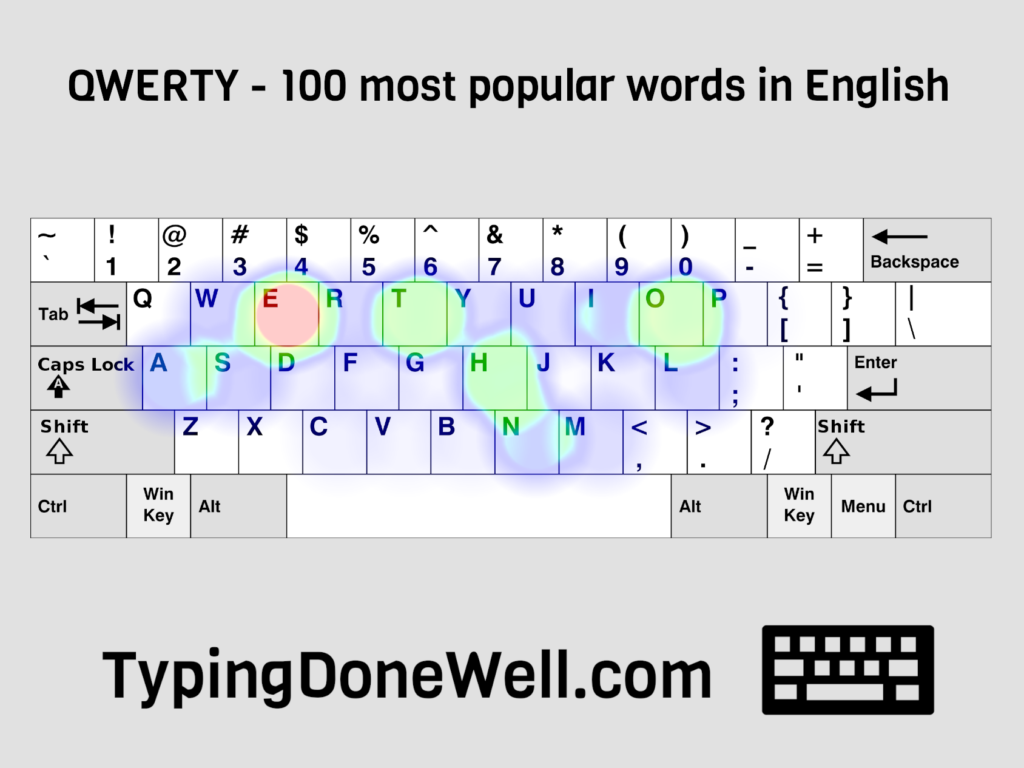
As you can see when you type using QWERTY you need to move your fingers from a home row a lot. It is not a movement efficient layout.
I didn’t end on this. To be able to tell the difference we need something to compare. I chose a well-designed new layout – Dvorak. Here is the result for the same test:
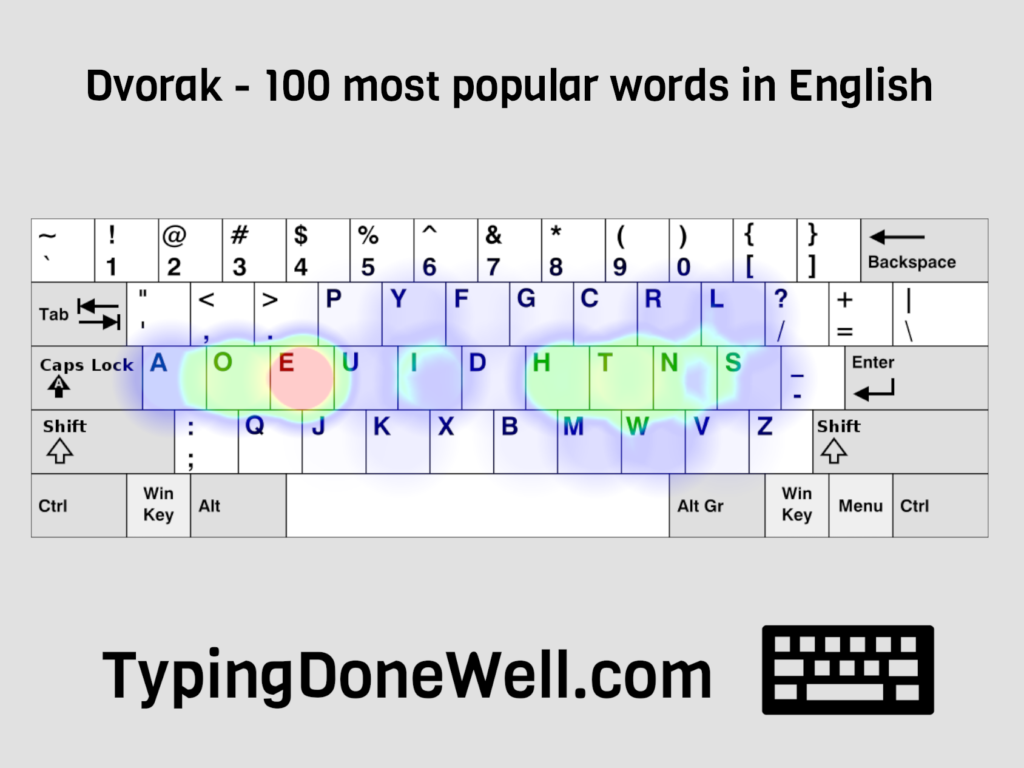
You can see the difference between those two layouts. When typing on Dvorak you don’t need to move your fingers as much. It makes typing much more comfortable.
But it’s not all. There’s much more to the Dvorak layout. So much that I made a whole article just about Dvorak. You can check it out here – ARTICLE ABOUT DVORAK
Back to the question: Is QWERTY outdated?
QWERTY is an outdated layout. I compared it to Dvorak for the 100 most popular English words (as the images show). QWERTY is much less movement efficient than the newer layouts such as Dvorak. Based on those tests you can say that QWERTY is an outdated layout. It is not as efficient and comfortable as newer layouts.
There are more great new layouts that you can choose. You don’t need to keep using QWERTY. One of those layouts that I can recommend is Colemak. It is a very well-designed layout that competes with Dvorak.
I made a long detailed article with all you need to know about Colemak. Here’s the link if you want to read it – ARTICLE ABOUT COLEMAK
Why is QWERTY still used today?
Why do we keep using this old layout that is QWERTY? Actually, it’s a good question.
It is probably because many people don’t know they can change the layout. QWERTY comes as default with everything. With the system, with keyboards, in settings. It’s not common to find a keyboard in a different layout.
QWERTY is still used because it is everywhere as a default. Most people don’t even know it is possible to change the layout. You can choose other layouts at any point. The only issue is that you can’t see it on your keyboard. You need to memorize the whole layout. There’s no point in doing that if you are not learning touch typing.
For touch typing, it is really good that you can’t see the layout. It helps a lot with learning this skill. If you don’t know here’s what touch typing is:
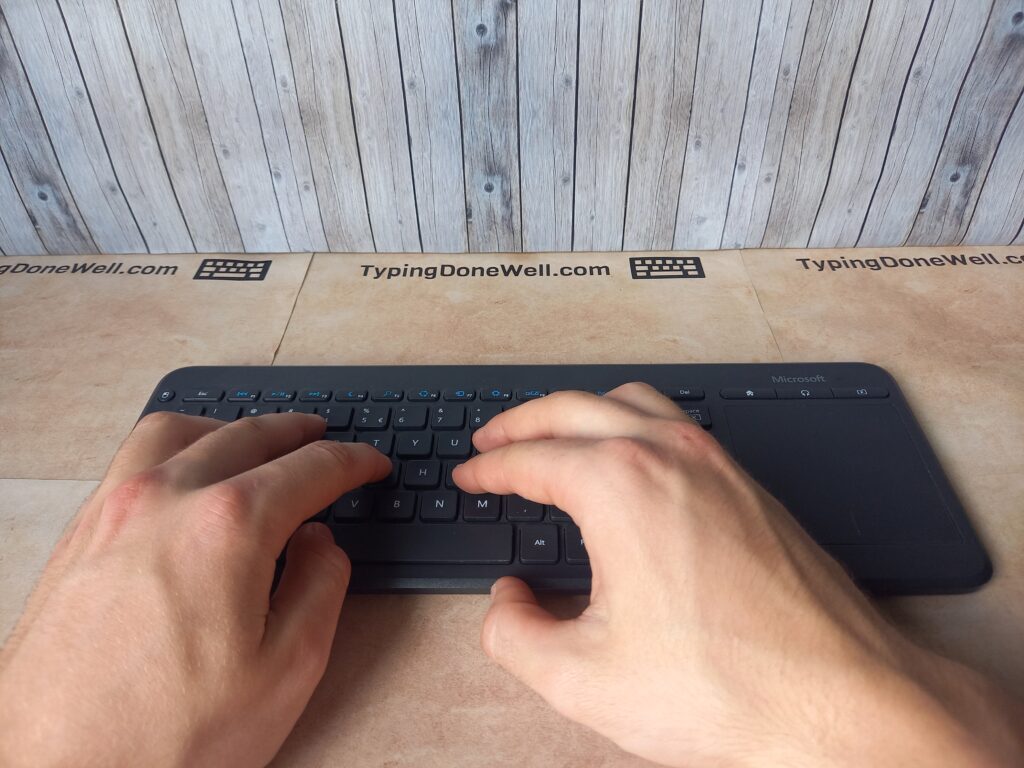
Touch typing is a skill that makes you type much faster. You can type even without looking at your keyboard. If you are interested in learning that skill you should check out my article. It covers all the basics you need to know when starting out. Here’s the article – ARTICLE BASICS OF TOUCH TYPING
Why do F and J keys have bumps?
You can very often see those little bumps on the F and J keys. You can definitely feel them when you place a finger on F or J key. What are those bumps and what are they for?
Those bumps are kind of a placement finder. With them, you can easily locate the fourth and seventh keys of the middle row.
This whole middle-row nonsense probably tells you nothing. Don’t worry, if you don’t type using touch typing you don’t need to get it.
Let me put it in something much more readable. Why do F and J keys have bumps?
F and J keys are the fourth and seventh keys of the middle row. Those keys have bumps to find them easier when touch typing. F and J keys are places where your left hand’s and right hand’s index fingers are. The bumps make finding the right spot for fingers easier. With them, you don’t need to look down at your keyboard.
There’s no real use for them when you’re not touch typing. Those bumps can maybe help you find F and J keys but you don’t need them to type while looking at your keyboard. Bumps are for more advanced typists who don’t look at the keyboard when they type.
Typing on your keyboard without looking is a very useful skill. When you learn touch typing it is essential for you to learn. If you have trouble typing without looking at the keyboard you might want to check out my article.
I talk about typing without looking at your keyboard in my dedicated article. You can read it here – ARTICLE HOW TO TYPE WITHOUT LOOKING
What keyboard layout does Australia use?
Australia is a country where the main language is Australian English. It is a unique dialect of English, slightly different from both US and UK English. Do they need a special layout for their language?
Most of the time the layout that people in Australia prefer is a standard US-QWERTY layout. Most of the time it just fits their needs.
Australia mostly uses a standard US-QWERTY layout. Although the main language of Australia is Australian English, there’s no need for any special letters in this dialect. You can even type using UK QWERTY if you want to. But most people choose standard QWERTY.
Australia uses a regular QWERTY that people from the US are used to. There are no fancy layouts with extra keys or anything like that.
What is the alternative to QWERTY?
QWERTY is not the only keyboard layout there is. It is actually only one of a lot of them. Not only that, it’s not a very good one too.
There are many much better layouts that are created for typing faster. Those layouts save the movement of your fingers when you type. That means you need to move your fingers less when typing.

It is much more comfortable to type using those layouts. It is also easier to reach a better speed when typing. You are probably wondering what are those secret layouts I’m talking about?
QWERTY is definitely not the best keyboard layout out there. You can use the ones that are created to be faster. The layouts that are worth considering are mainly Dvorak and Colemak. These are the best ones to choose when it comes to efficient finger movement. They are better to type on and have great advantages compared to QWERTY.
I can really recommend those layouts. I made two whole articles talking about different aspects of both layouts and comparing them to QWERTY.
In the article about Dvorak, I went into all the detail you would need to know about Dvorak. I ran a few tests to see how efficient it is compared to QWERTY and left my true experience with it. Here is my article – DVORAK ARTICLE
In the article about Colemak, I also ran tests to compare it to other layouts. The results are pretty interesting. You can check my article here – COLEMAK ARTICLE
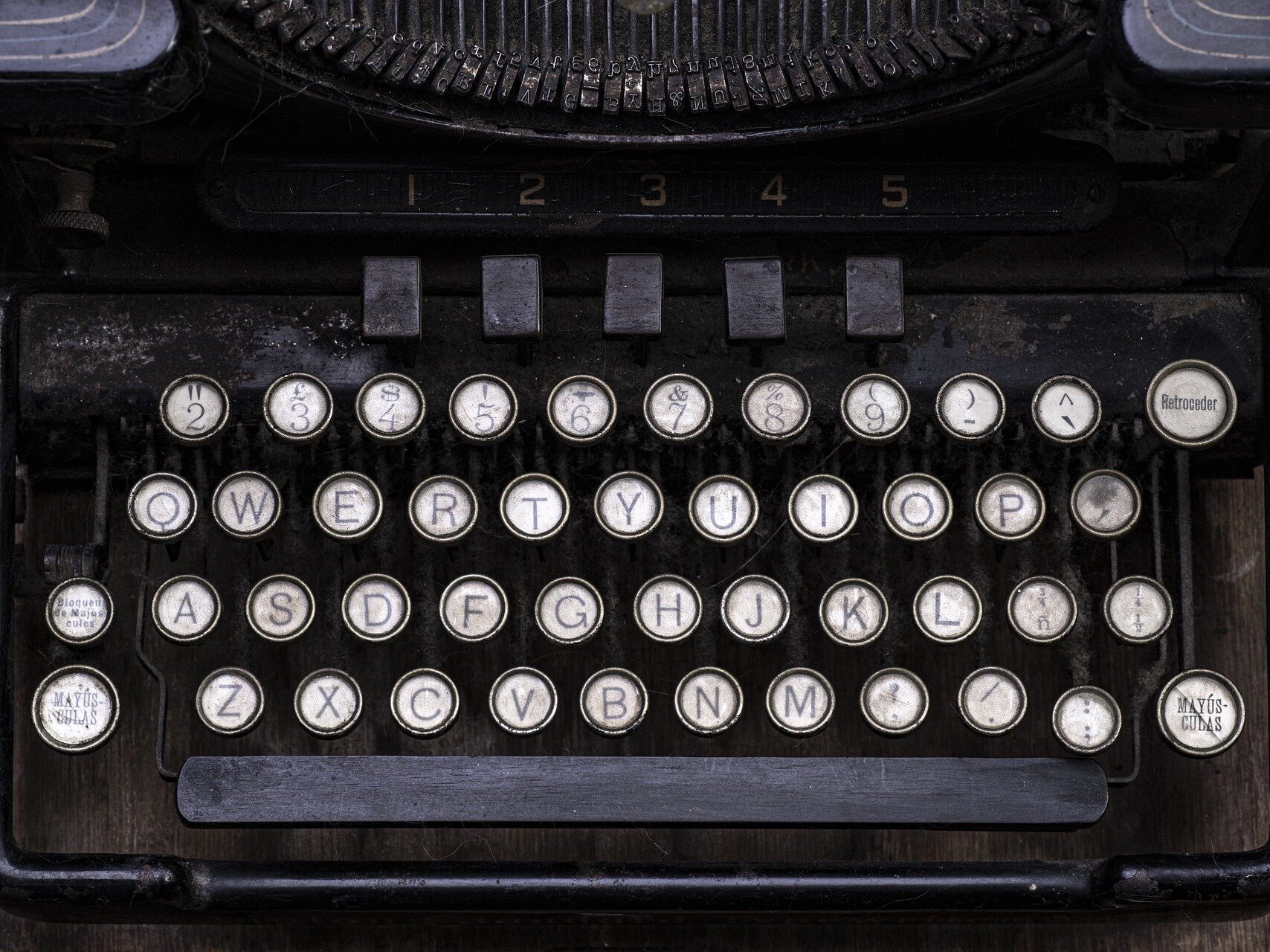
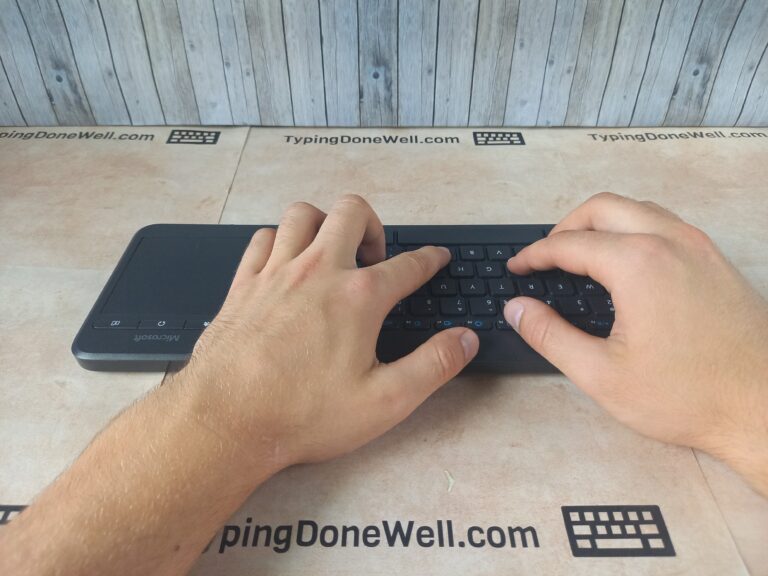
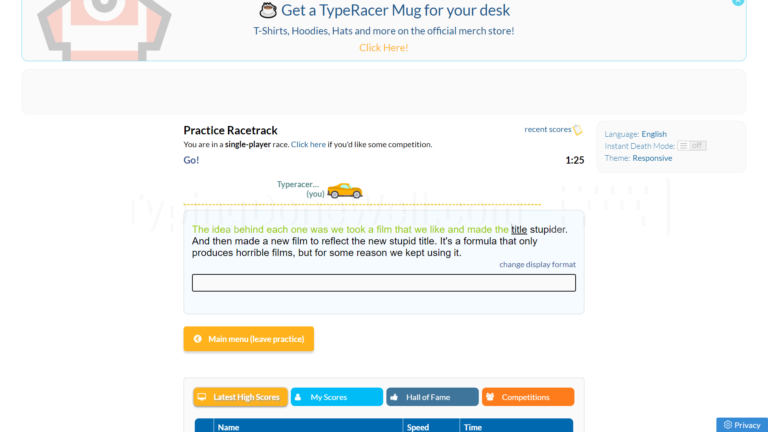
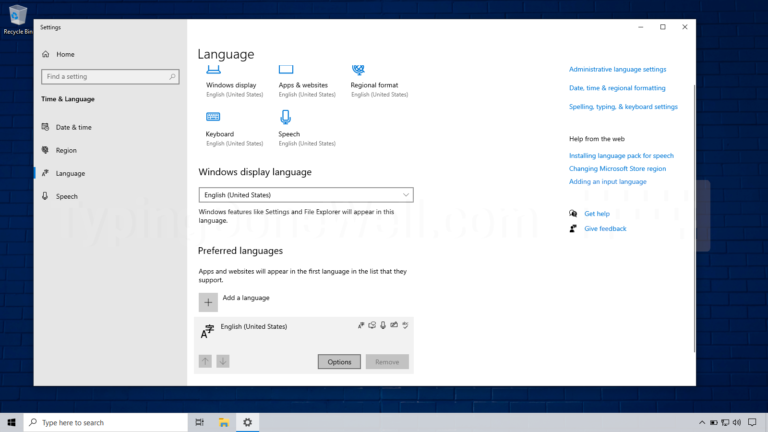

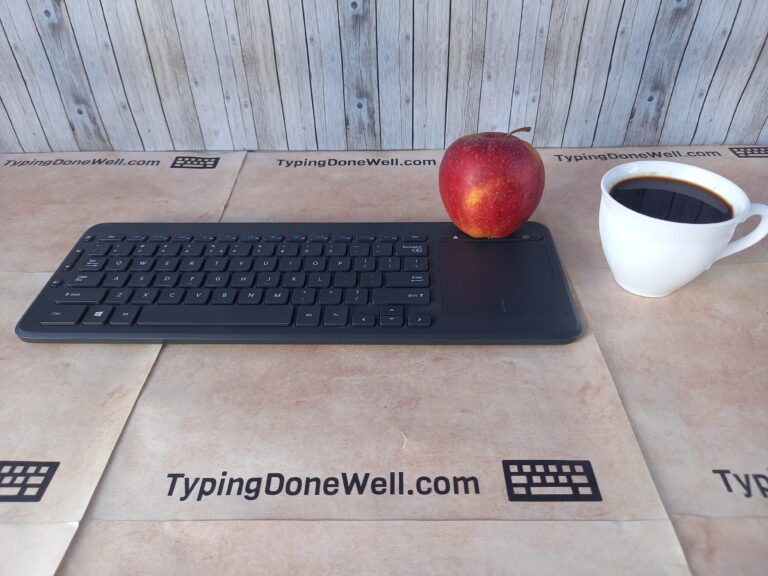
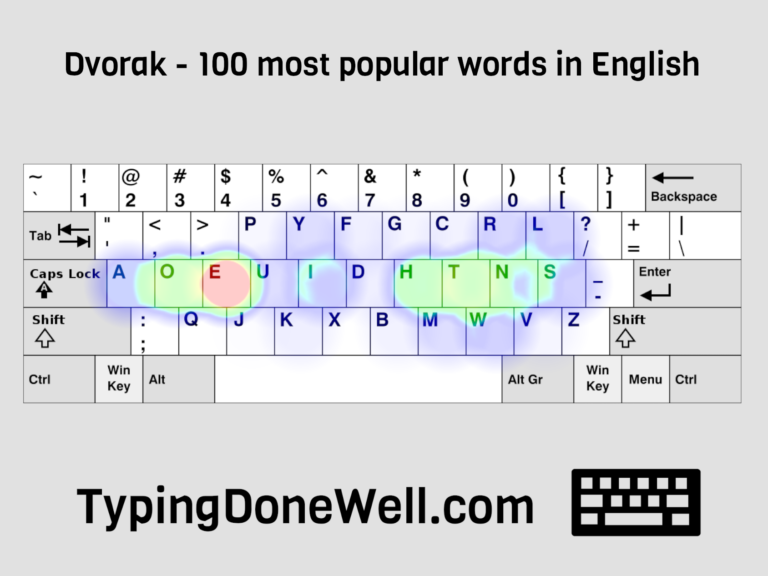
👍
Qwerty